Introduction to Travel Demand Modeling
Approach of Travel Demand Modeling
What is modeling?
Mathematical Representation of a System or Concept
What is travel demand modeling ?
- Mathematical representation on why, where, when and how people travel
- A set of mathematical relationships describing when, why and how people and goods move within and in and out of geographic area.
Why we need it?
To solve the these problems

How we do it?
Simplest travel demand modeling approach is 4-step process

4-Step Travel Demand Modeling
- You wanted to make a shopping trip Trip Generation
- You then decide where to go for shopping Trip Distribution
- Then you decide how to travel: walk, car, bus, Light Rail Mode Choice
- You decide which route you take based on time & distance Highway Assignment
Types of Travel Demand Models
- Classic 4-step models
- Mode/destination choice models
- Activity-based models
- Population Simulation
- Tour Based Models
- Integrated Land Use and Transport Model
Basics in Travel Demand Modeling
Assumptions
- People + jobs = trips
- Traffic volumes = trips/riders
Application
- Forecast people + jobs 20-30 years out – Transport Master Plan
- Regional Transport Improvement Plan
- New Highway Improvement Plan
- Traffic and Toll Revenue Forecast for Toll Expressways/Bridges/Tunnels
- New Transit Service Feasibility Studies
- Ridership and Revenue Forecasts for Transit Services: Buses, BRT, LRT, Metro
- Traffic Impact Analysis
- Estimate demand & test improvements
- Environmental Impact of Travel – Present & Future
- Congestion Pricing Studies
Inputs
- Socioeconomic data by traffic analysis zone
- Highway and transit network representations
Model
- Parameters and relationships
- Trips/HH, trips/job, sensitivities of choices to time and cost
- Determined from observed data(surveys,cell phone data, counts)
Outputs
- Network with volumes on each link
- Matrices of trips
- Reports
Example of Travel Demand Model
Study Area
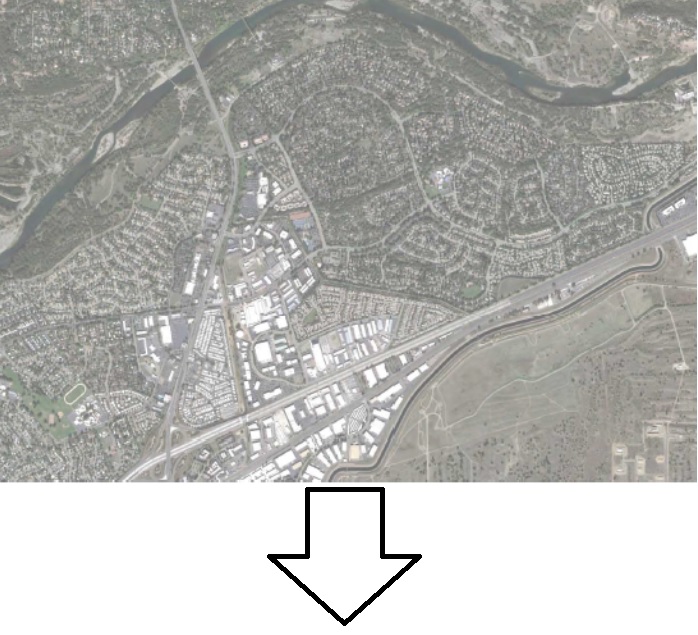
Defining Road Netwrok
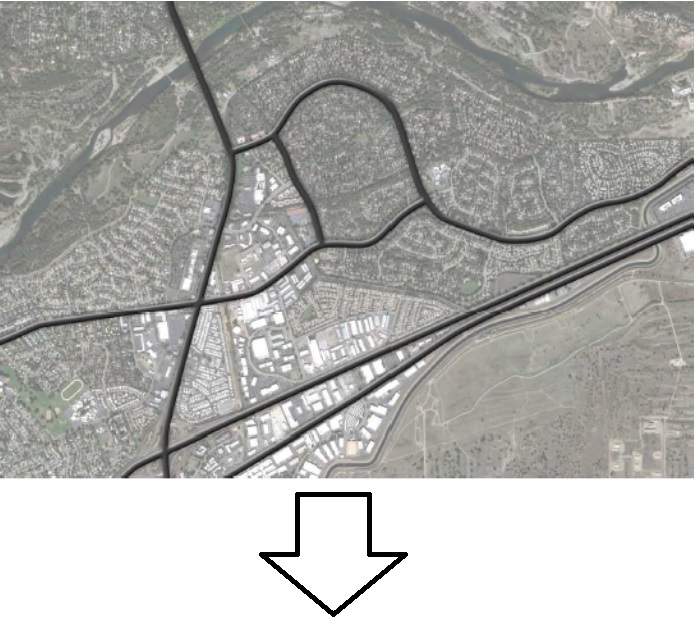
Land Use

Define Traffic Analysis Zones
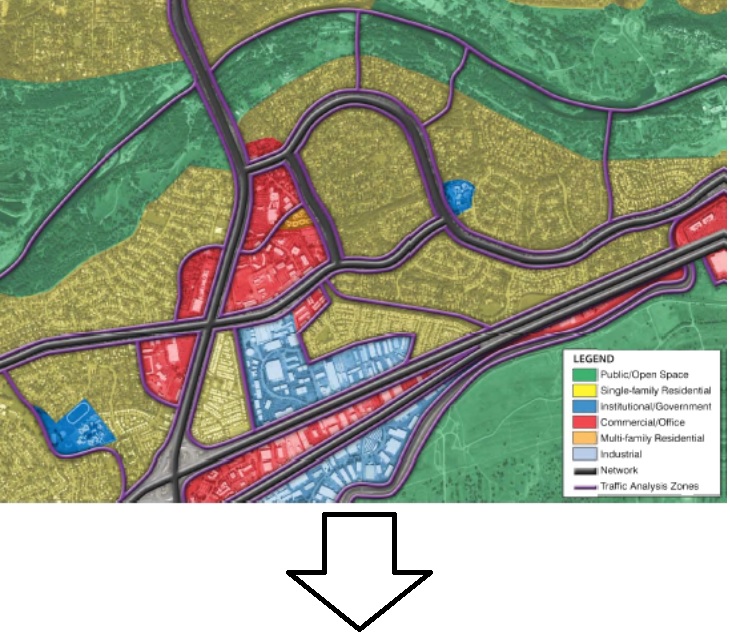
Trip Generation

Trip Distribution
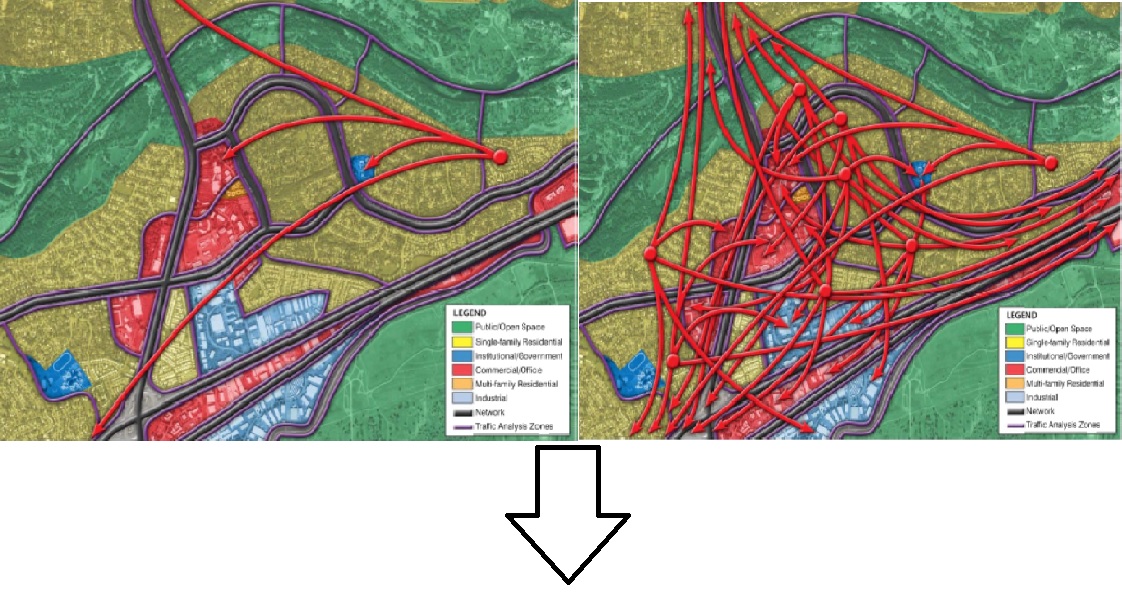
Mode Choice

Highway Assignment
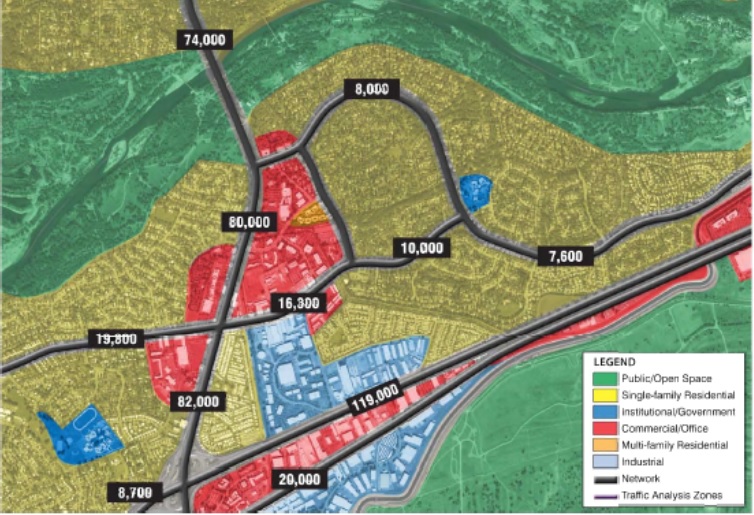
General Procedures of Travel Demand Modeling
- Specification: mathematical form is specified (e.g., regression, cross classification, logit, lookup table) and the variables of interest are identified
- Estimation: In model estimation, one or more mathematical procedures are used to determine the likely values of the model parameters and coefficients.
- Implementation: Once a model is estimated, it needs to be implemented so that it can be applied.
- Calibration/Validation: The model is validated in a “base year” against observed data to make sure that it is performing adequately and reasonably. Based on the performance of the model in model validation, small adjustments are made to the model (“model calibration”) until the model accurately replicates observed patterns and behavior.
- Application: In the final step of the process, models are applied, generally using computer software, so that they may be used for developing forecasts.
What is a Trip?
“…..travel occurs because of activities that occur at the destination…travel is simply a means to an end…..”
- Trip means shortest possible division of a journey that has a destination, a purpose and have to end within a day.
- Home based Trips – The trips with either Home is origin or destination
- Non-Home based Trips – Rest of the Trips with purpose not falling in Home Based Trips
- Usually Combination Trips are ignored and trip purposes needs to be classified into few groups
- Travel decision is assumed as independent process
What is a TAZ?
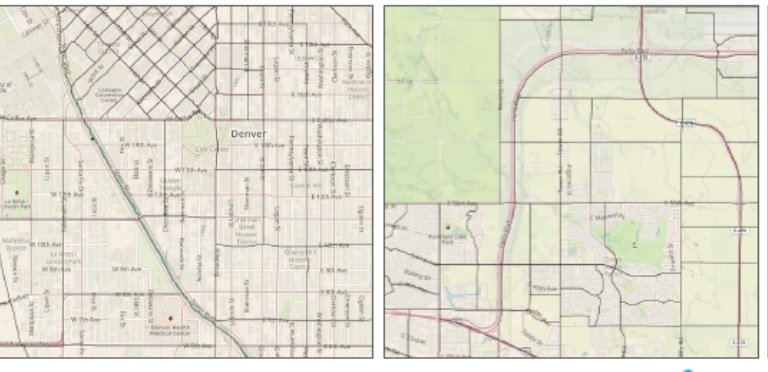
- TAZ: Traffic Analysis Zone
- Zones are characterized by their population, employment and other factors and are the places where trip making decisions are made (trip producers) and the trip need is met (trip attractors).
- Trip making is assumed to begin at the center of activity in a zone (zone centroid).
What is Mode Choice?
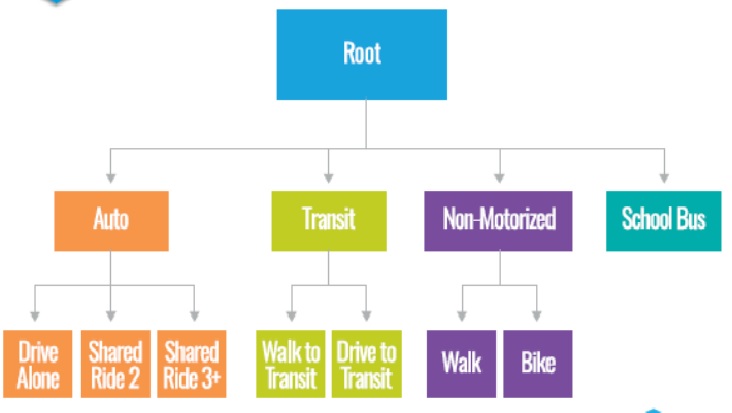
- Mode choice models are used to predict the number of trips that will use each of the available modes for origin-destination pairs.
- Modes can include, for example, auto, premium transit, local transit, ridesharing, and walking.
- Discrete choice models, such as multinomial logit and nested logit models, are the predominant modeling approach used in practice
What is Highway Network?

- The highway system and transit systems are represented as networks for computer analysis.
- Networks consist of links to represent segments of highways or transit lines and nodes to represent intersections and other points on the network.
- Data for links includes travel times on the link, average speeds, capacity, and direction.
Software for Travel Demand Modeling
- EMME II – GUI based software, less control for users
- TransCAD – GUI based software, medium control for users
- Cube – Highest control for users, most popular
- Cube Voyager – for travel forecasting based on the four-step approach
- Cube Dynasim –for dynamic multimodal microsimulations for intersection design and analysis;
- Cube Cargo—for freight forecasting and facility analysis;
- Cube Analyst –statistically optimized trip matrix estimation
- PTV Suite – Consists of VISUM, VISSIM, VISUM PuT
Overview of Actvity Based Models
Travel patterns are organized within activity-based models as sets of related trips known as “tours”. One of the benefits of estimating tours rather than trips is that coordinated decisions within a household may be modeled comprehensively based on a wider set of influential factors.
Theoretical Benefits
- Detail
- Precision
- Consistency
- Behavioral Realism
- Analytical Flexibility
Practical Benefits
- Time chosen for travel
- Travel Behavior related to demand policies such as “road pricing, telecommuting programs, transit vouchers, and land use controls”
- Non-motorized Travel
- Time-Specific traffic volumes and speeds
- Freight and Commercial Vehicle Movements.
What is a Tour ?

How can Models be Improved?
- Better data
- Improve representation of bicycle and pedestrian travel
- Better Auto Occupancy Models
- Better time of day procedures
- Use more trip purposes
- Better representation of access
- Incorporate costs into trip distribution
- Add Land Use Feedback
- Add intersection delays